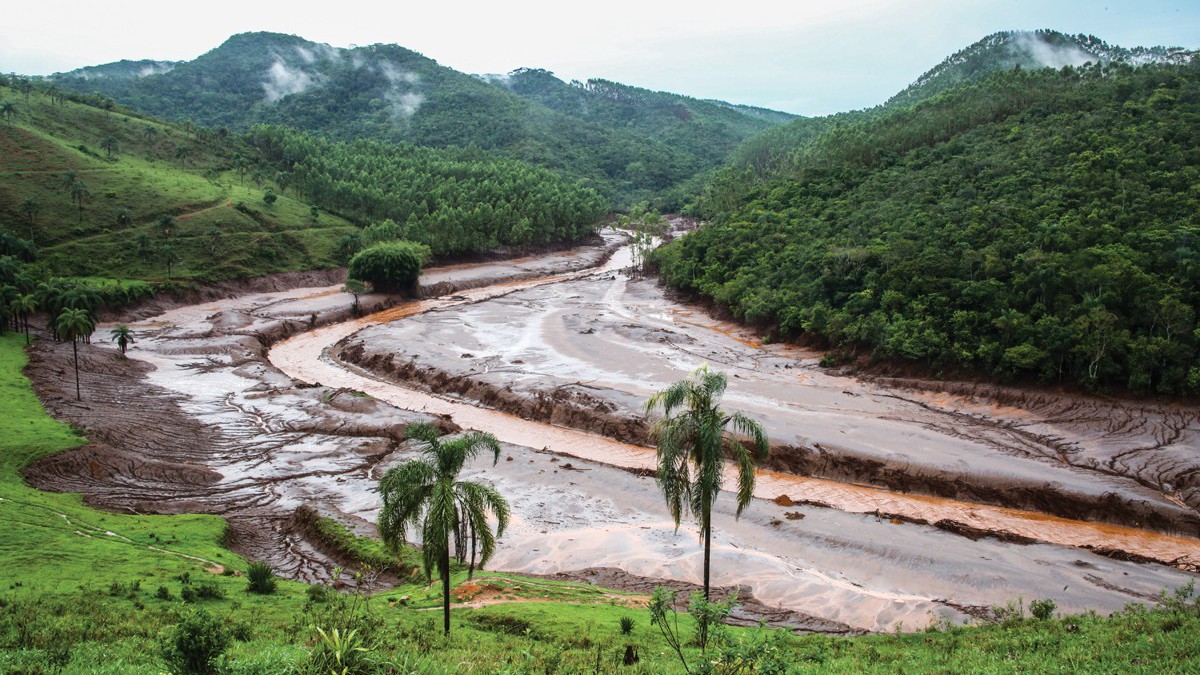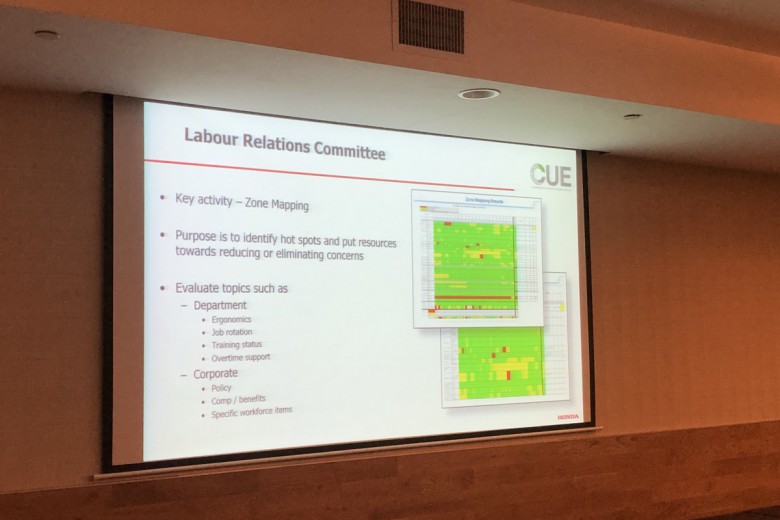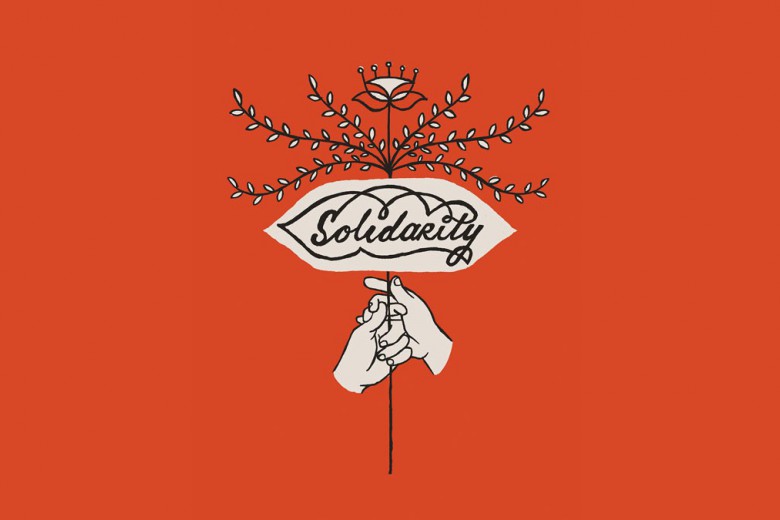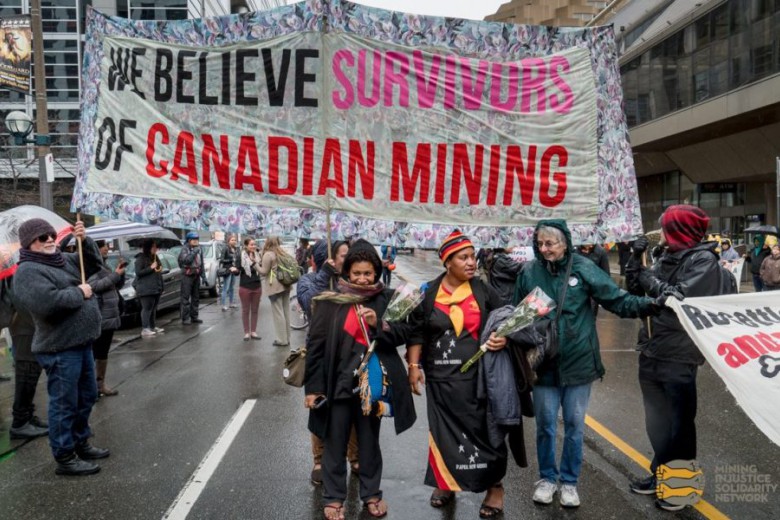We meet our guide, Miguel, at the central square in Mariana, the old colonial capital of the Brazilian state of Minas Gerais. For centuries the region was at the heart of a slave-driven mining economy, and it continues to be one of the major centres of Brazilian mining. Hauntingly, in the central square of Mariana stands a replica of the old pelourinho – a monument where imprisoned runaway slaves were chained and whipped to death in the name of the Portuguese Crown, progress, and order. Miguel explains to us that slaves were forced to work gruelling hours in the mines, and then walk – and often die – on the seven-month journey along the Estrada Real (Royal Road) to the ports of Paraty and Rio de Janeiro with the mineral cargoes on their backs.
Miguel then guides us along the Estrada Real just outside Mariana to the remains of the village of Bento Rodrigues. The village was located beside Samarco’s iron ore mine, the largest mine in the region and the second-largest in the world, jointly owned by Anglo-Australian multinational mining giant BHP Billiton and Brazil’s largest mining company, Vale SA.
On November 5, 2015, the Samarco mine tailings dam broke, unleashing a toxic brown avalanche of mine waste. The wave completely buried Bento Rodrigues. The town of Paracatu de Baixo and other neighbouring villages were also decimated. The flood of mine waste killed 19 people, including workers and contractors at the mine, elderly people, and children of families living close by who were unable to escape.
The flood of toxic mud continued along 663 kilometres of the Rio Doce river system to the Atlantic Ocean, poisoning the land and untouched forests along its path. Over 250,000 people and countless animal species that depend on the river were suddenly without their most basic source of life.
The catastrophe is being called Brazil’s worst environmental disaster and it is one of the largest and most deadly workplace tragedies in mining history worldwide.
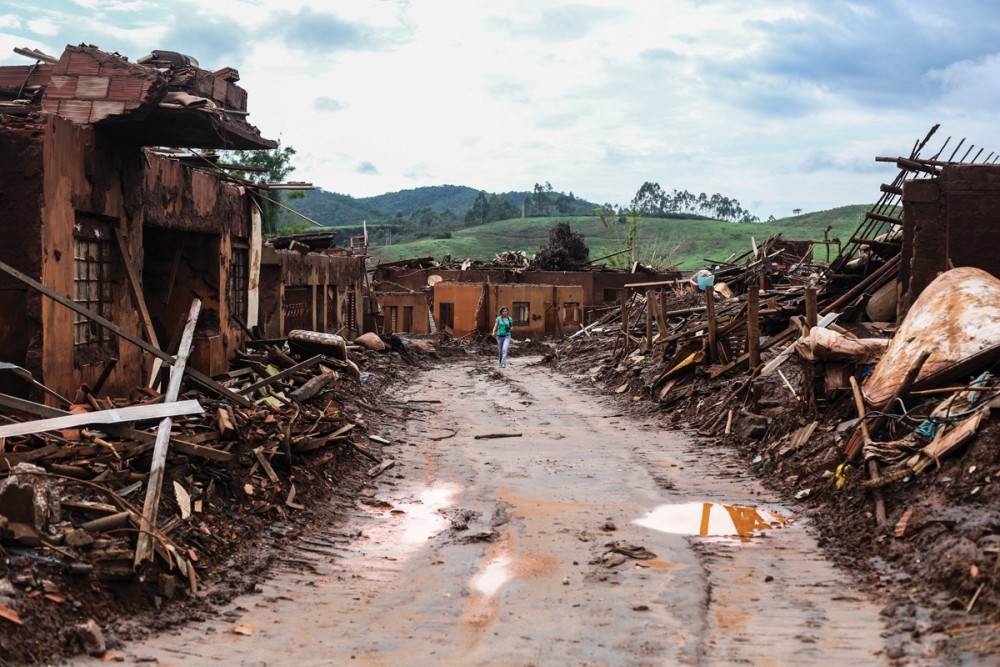
An investigation by the federal police found that Samarco knew about the structural deficiencies of its tailings dam before the dam broke and was under pressure by public authorities to fix it. Despite these revelations, the courts suspended criminal proceedings against mining company executives charged with qualified homicide while alleged breaches of procedure in gathering evidence are investigated.
Samarco knew about the structural deficiencies of its tailings dam before the dam broke.
Adding insult to injury, an R$20 billion (C$7.9 billion) out-of-court omnibus compensation settlement between the affected state governments of Minas Gerais and Espirito Santo, the federal government, and the mining company was hastily negotiated in March 2016. The settlement fell well below earlier estimates for long-term reparations. Brazil’s attorney general at the time, Luís Inácio Adams, had previously told reporters that the cost could be “as much as R$30 billion.” Victims were left out of the negotiation process and were not consulted before restitution payments were set based on the minimum wage. Later, we heard unconfirmed reports from community members that representatives of Samarco had warned them that if victims did not accept restitution at minimum wage rates, they would get nothing.
“Nowhere in the world does the criminal identify the victim,” says Isabelle, a union activist we encounter at a meeting for disaster victims. “Yet this was exactly the arrangement that was agreed to, signed off by three Brazilian governments behind closed doors. The settlement is the political–legal expression that public entities are on the side of mining companies, ignoring the communities. It politically shows who is with whom.”
One official working at the Ministry of Mines and Energy, speaking to us on condition of anonymity, tells us, “the National Congress suffers a strong pressure from economic powers, [so it] does not have a concern for the public interest.”
The mine is mother
The Samarco tragedy exemplifies the perilous booms and busts in mining and other extractive industries. The Brazilian mining industry has almost three times the national average of workplace accidents of other industries in the country. Recent studies show an alarming increase in tailings dam breaks linked to corporate cost pressures during a recession in price cycles.
Samarco built the giant tailings dam and increased production during a mineral price boom in the first decade of the new millennium. When mineral prices, including those for iron ore, dropped, the company cut costs to maintain profit levels. They increased production from six- to nine-day shifts, scaled back union benefits, outsourced work by hiring lower-cost short-term contractors, and neglected to comply with security and environmental regulations. Given these circumstances, victims are adamant that the dam break “was not an accident; it was a crime.”
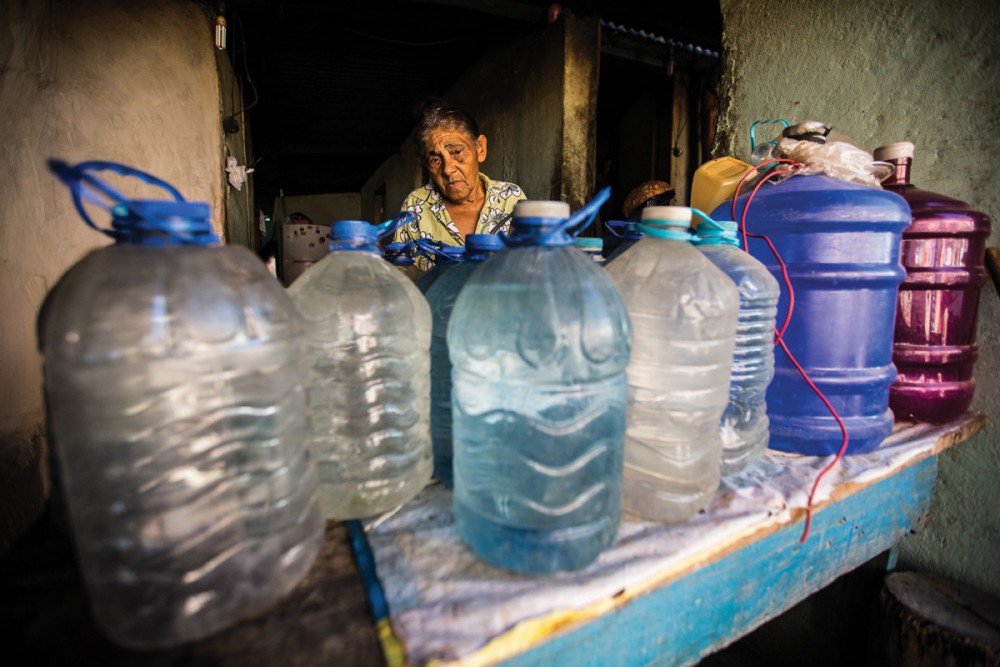
After the disaster, the mine immediately stopped operations, creating a local economic crisis. By March 2016, the mine had announced that it would lay off over 40 per cent of its workers. According to Mariana’s city council, 80 per cent of Mariana’s public coffers relied upon direct and indirect revenue from Samarco operations and royalties before the disaster. When the mine ceased operations, the municipal government was forced to lay off workers. People working in secondary industries have also been affected. Many are desperately hoping for the return of mining activity to generate income and growth, despite the destruction. Local media have joined the chorus. One recent headline read: “Samarco is mother.”
But others are calling for a complete restructuring of the economy in a way that shifts workers’ relationship with the land away from the swings of a boom-and-bust economy to more sustainable economic activity along the Rio Doce. As one local fisherman put it, “To lose the river is to lose yourself. It is a loss of all tradition, past and future.” How does a community long locked into resource extraction rebuild its identity and economy after such a tragedy?
In the wake of disaster
The Movement of People Affected by Dams (MAB, in its Portuguese acronym) organizes affected community members from the Samarco tragedy, along with a coalition of organizations including community chapters of the Red Cross and the Catholic Church, and legal groups like the public ministry. MAB frames the debate over land and resources as a question of self-determination for community development. They help people contextualize the fight for the rights of Samarco victims as part of a historical struggle in Brazil of people defending their land and autonomy from decades of government-backed mega-hydro projects and mining dams that have displaced thousands of people from their land without proper compensation.
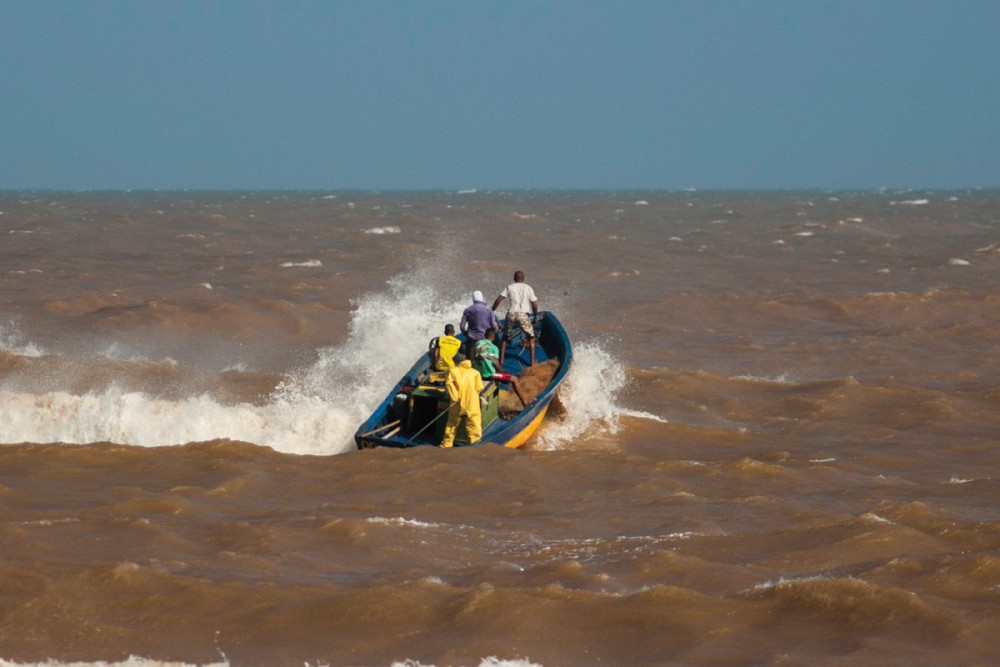
From its inception in the 1970s, the organization has been part of a larger anti-capitalist movement of workers that includes the landless peasant movement, the United Workers’ Central, and the Workers’ Party. The movement has fought for an end to authoritarian rule and for protection of vulnerable and landless workers, and to assert their democratic rights over social goods like water and energy.
MAB continues to receive funding and support from unions as they organize with anyone directly or indirectly affected by dams. In the case of Samarco, this means anyone along the Rio Doce river basin who is dependent on the communities or the river itself for their livelihood, including mine workers, farmers, fishers, tenants, landless workers, and households. In Brazil, MAB has successfully advanced legislation to protect people affected by dams. At the international level, they have worked with similarly focused national movements, including by helping to create the World Commission on Dams, an international body mandated to develop safer global standards and guidelines for future dams, in the 1990s.
While we were in the community of Barra Longa, which was partially destroyed by the avalanche of mud, we attend a community meeting organized by MAB at the local hall. Groups like MAB host regular community meetings in response to the escalating economic crisis in the region since the disaster. They often invite Samarco and government representatives, who rarely show.
On this day, the hall is filled with people of all ages – mothers with children, elderly couples, and students. Despite having spent exhausting months organizing the fight for collective reparations, they greet each other with hugs and hopeful faces. The group welcomes newcomers to the gathering, and Fafá da Barra, a well-known town artist, opens the meeting with a song of resilience.
Despite having spent exhausting months organizing the fight for collective reparations, they greet each other with hugs and hopeful faces. The group welcomes newcomers to the gathering.
Maria, a serious and sensible MAB activist in her 20s, tells us, “The protagonists of this struggle are the women, the young people, and the children who have been affected.” They live and breathe the need for a radically different future and are actively building creative resistance, resilience, and solidarity through music, art, public demonstrations, and commemorative ceremonies. With the young peoples’ creativity and leadership, it seems clear that these gatherings are open, safe spaces for collective healing. At the same time, they provide opportunities for the community to identify their needs, resources, challenges, and opportunities together, and take collective action to solve problems and achieve their goals.
This day, there is good news: the lawyer announces that the court has annulled the out-of-court reparations settlement originally signed between Samarco and the government. The settlement had been developed without any victim involvement, so the court has ordered a reset in order to ensure victim participation in the compensation negotiations. The victory validates community members’ efforts to collectively demand greater reparations, rather than losing one by one to the mining giant.
MAB and other organizations continue to bring affected community members together in an effort to build social ties, broaden the base for action, and ensure participatory, community-driven economic restructuring and development. Victims have channelled their energies into their own newspaper, A Sirene, to tell their stories in their own words so the wider public can never forget the tragedy. Some activists have even taken the Samarco case to international fora like the 2016 World Social Forum in Montreal, Canada, and the Inter-American Commission on Human Rights.
In November 2016, hundreds of disaster victims trekked from the mouth of the Rio Doce to Bento Rodrigues in a week-long march organized by MAB to mark the one-year anniversary of the socio-environmental crisis. As João, a community member who has been attending the meetings since losing his entire farm and livelihood in the disaster, asserts, “rights are only ever fulfilled with social organization and struggle.”


